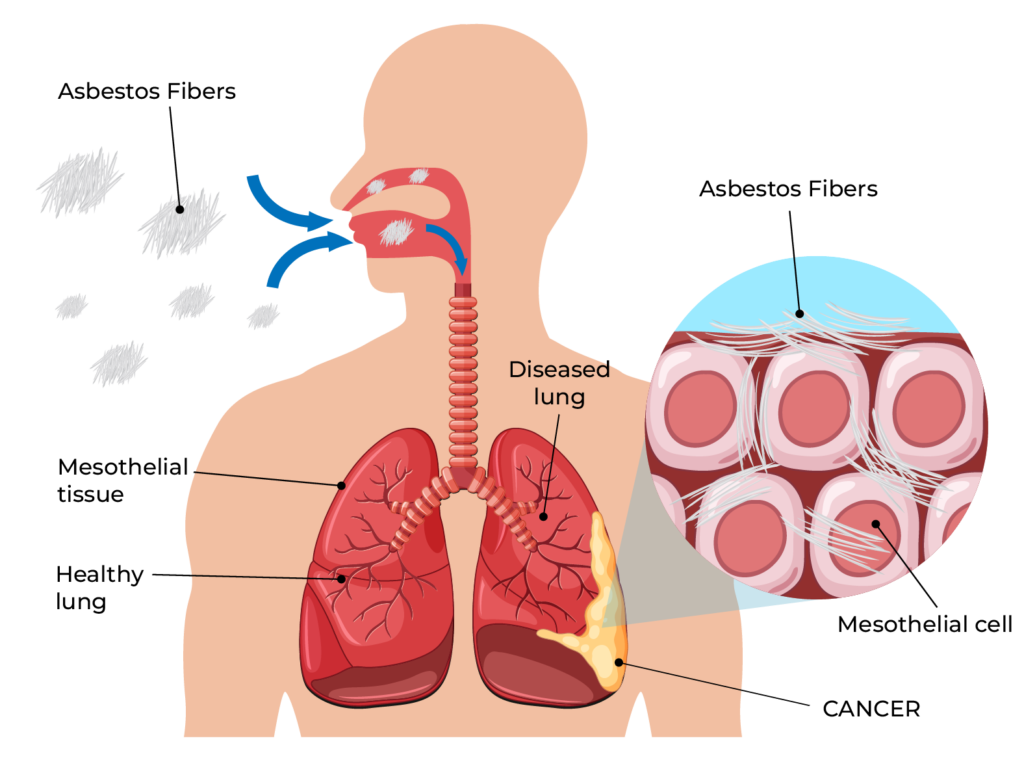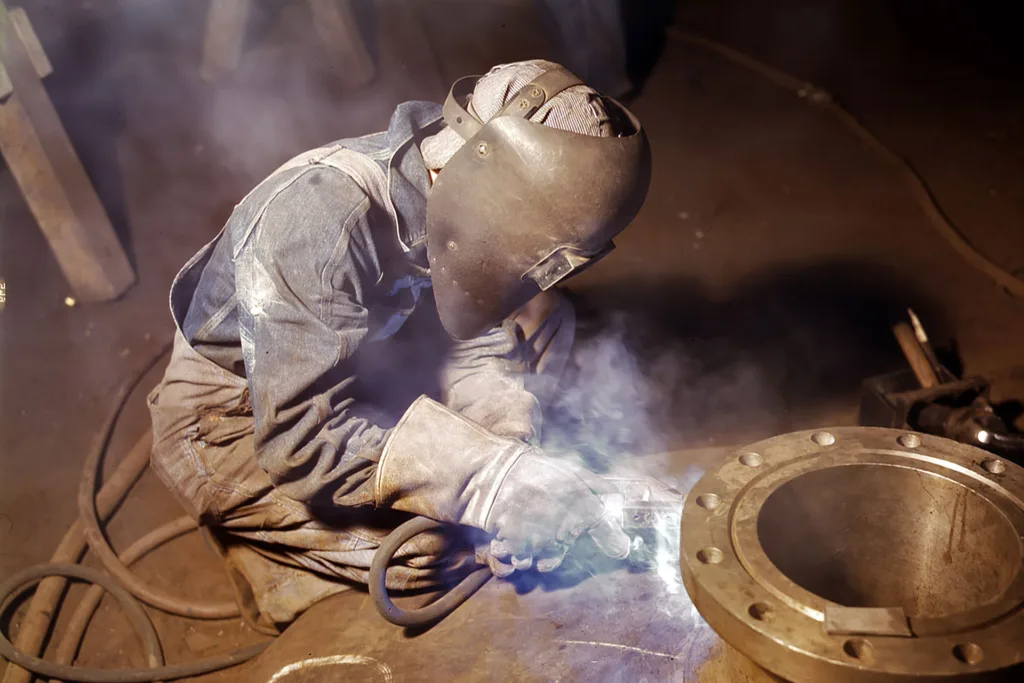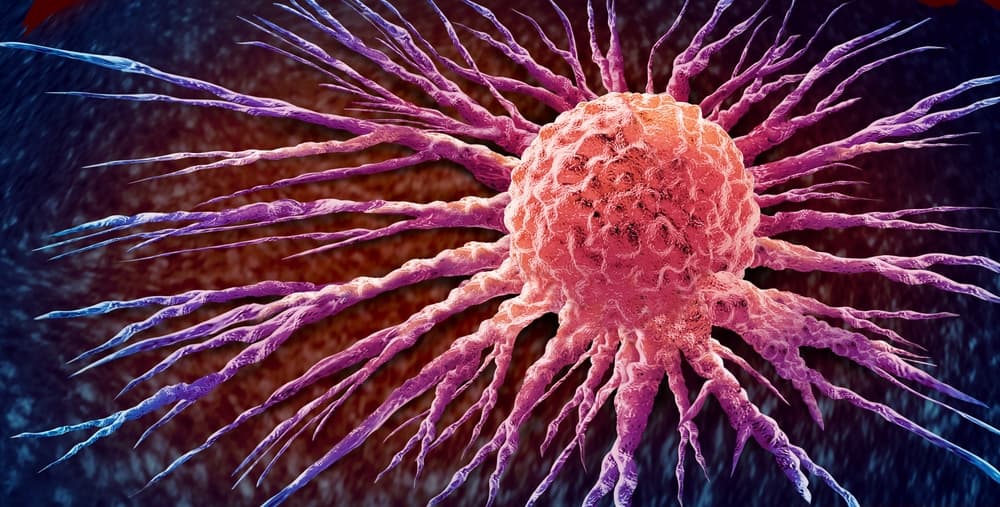Over 40 million people in the U.S. alone use talcum powder daily. Talcum powder has various uses, including for babies to prevent diaper rash and cosmetic purposes. It is a key ingredient in various makeup products and is often used as an odor absorber.
Unfortunately, over time, it was discovered that talcum powder, made from talc, was often contaminated with asbestos, posing severe health risks for those who used it. Talc and asbestos naturally form so close together that it is often impossible to separate them. This has been proven and documented since 1872. And while not every talc deposit is contaminated by asbestos, the vast majority of them are. Talc deposits often contained the most deadly asbestos, such as tremolite or anthophyllite. These two forms are far more carcinogenic than chrysotile, the most commonly used type of asbestos.
Brief History of Talc
Talcum powder is composed of talc, a soft mineral of hydrated magnesium silicate. It can be white, gray, or green and has a soap-like texture. Manufacturers grind talc down until it becomes a fine powder. Talc is known for its ability to absorb moisture, disguise odor, prevent skin rashes, and reduce friction. Because of this, it became a critical ingredient in baby powder, cosmetics, and deodorant.
Johnson & Johnson (J&J), a household name, is the largest producer of talcum-based products, including its iconic J&J Baby Powder. Men and women worldwide have used talcum powder daily for many years but are just now suffering the effects. Documents show that J&J knew that asbestos-contaminated talc had been used in baby powder since the 1950s. However, they did not discontinue the sale of its talc products until 2023 – they are currently facing more than 50,000 lawsuits related to asbestos exposure.
Talc dust is an irritant and causes respiratory problems, including coughing, chest pain, and shortness of breath. Prolonged exposure can lead to lung cancer, mesothelioma, and even death. The World Health Organization (WHO) has classified talc as potentially dangerous and is likely a cause of cancer.
Health Risks Associated With Talc
Asbestos-contaminated talc is associated with several severe medical conditions, including:
- Lung Cancer
- Mesothelioma
- Ovarian Cancer
- Talcosis or Talc Pneumoconiosis
Those at risk include talcum powder users, children, and workers in the mines involved in procuring talc. Workers exposed during talc production or industrial use are also at risk. Ongoing tests from as far back as 2000 have revealed that asbestos-contaminated talc has been found in children’s toys and makeup.
The exposure risk comes from the use of cosmetic-grade talcum powder to prevent chaffing and irritation after haircuts.
Talc was often used as a filler to improve thermal shock resistance and strength after the firing process.
Crayons, modeling clay, and amateur crime lab kits are among the toys contaminated by talc-containing asbestos. The makeup contaminated with asbestos was sold at Justice and Claire’s.
The most common contaminated products were baby powder, cosmetics, shaving products, and other personal care products.
Talc is used in paint to provide a layer of weather and corrosion resistance.
The workers in talc mines and mills faced the highest levels of exposure as they worked with the raw form and dealt with higher levels of nearby asbestos.
Mesothelioma and Talc
Talc contaminated with asbestos can cause mesothelioma and other asbestos-related cancers. Due to the long latency period of 20-30 years, a diagnosis will come long after exposure.
The chances of developing mesothelioma from contaminated talc vary. The main factors are the duration of use and amount of exposure, as the risk is dose-dependent. Simply stated, the longer it was used, the higher the levels of asbestos exposure. Long-term exposure to low levels of asbestos concentrations can still cause cancer, as can short-term exposure to high levels of contaminated talc.
The higher the level of asbestos contamination in the talc, the higher the risk of developing mesothelioma. It’s important to note that different grades of talc have different levels of asbestos contamination.
Industrial Talc
Often contains asbestos levels of 50-70%.
Cosmetic Talc
Contamination levels range from zero to 30% asbestos.

Research has shown that in a survey of 166 mesothelioma cases from talc exposure, 122 were from cosmetic exposure only. Over the years, doctors and researchers have shown numerous mesothelioma cases where asbestos-contaminated talc was the only exposure a person had. A 2002 exposure study from the Annals of Work Exposure and Health found several cases of asbestos-related disease among talc miners in New York.
Contaminated talc continues to be a concern since talc and asbestos minerals develop under very similar conditions, and most talc deposits naturally contain asbestos. Because of this, it has been exceedingly difficult to find asbestos-free talc deposits.
Talc Contaminated With Asbestos in Johnson & Johnson Products
As early as 1969, J&J was well aware that it was normal for talc to have tremolite asbestos. By this time, J&J had already spent more than a decade purchasing mines worldwide in search of a purer source of talc. It wasn’t until May 2020 that J&J announced they would halt sales of its talc-based baby powder in favor of a cornstarch-based version. They claim this was due to a decline in sales and misinformation surrounding talc, despite the thousands of lawsuits and paper trail stating otherwise. In 2022, J&J announced they would also halt all sales of talc-based products worldwide, a complete reversal from their previously announced plan to continue the international sale of talc-based baby powder due to high demand.
Reuters reported that J&J has a $6.48 billion proposed settlement to resolve tens of thousands of lawsuits surrounding allegations that its baby powder and other talc-based products contain asbestos and cause cancer. The proposed deal would resolve the lawsuits through a third bankruptcy filing of a subsidiary company. The courts denied the two previous bankruptcy attempts as it was determined that J&J was not eligible for bankruptcy protection as the company was not in financial distress.
For the deal to proceed, J&J needs support from 75% of the outstanding claimants – this would end litigation entirely, including future lawsuits. The deal would also prevent those opting out of the deal to pursue individual claims.
In June 2024, J&J made an offer to pay $700 million to settle an investigation initiated by 42 states against the company. The allegations included misleading marketing tactics, claiming its talc-based products, including Baby Powder, were safe. Should the deal be approved, it would resolve any accusations that J&J misled consumers, and they would admit no wrongdoing and deny violating the law. At this time, J&J faces more than 60,000 lawsuits.
More Products Containing Asbestos-Contaminated Talc
Asbestos-contaminated talc has been found in numerous products, including personal hygiene products, cosmetics, children’s toys and makeup, and industrial talc products. It is a common ingredient in many household goods, though the most common use is talcum powder.
In 2019, the FDA found asbestos in nine of 43 cosmetic samples tested. By 2023, that number had dropped to zero.
Companies that had asbestos-contaminated talc are:
- Beauty Plus Global Inc.
- Chanel
- Claire’s
- Colgate-Palmolive
- Imerys Talc America Inc.
- Johnson & Johnson
- Justice
- Shulton Co (now owned by Proctor & Gamble)
- Vanderbilt Minerals
- Whittaker, Clark & Daniels
Cosmetic-grade talc, approximately 98% talc, is found in many products, including foundation, powder, creams and moisturizers, eye shadow, blush, and mascara.
Some of the products that tested positive for asbestos include:
- Beauty Glazed Gorgeous Me Eye Shadow Tray Palette
- City Color Cosmetics Timeless Beauty Palette
- Claire’s Rainbow Glitter Heart-Shaped Makeup Set
- Claire’s Pink Glitter Palette with Eyeshadow & Lip Gloss
- JoJo Siwa Makeup Set
- Justice Just Shine Shimmer Powder
Industrial talc is used in many modern products, including paint and glazes. The paper industry also uses talc to increase printability and reduce surface friction, and the wastewater industry uses talc to purify water.
Some industrial products containing talc include:
- Anti-caking agent in animal feed
- Artware and finishing glazes
- Ceramic toilets, sinks, and tiles
- Clay and pottery
- Crayons and chalk
- Electrical cables and switchboards
- Household appliances
- Jointing compounds, putties, and adhesives
- Paper and ink products
- Plastic and rubber automotive parts
- Rubber gloves
Vogelzang Law is Here to Help
If you have been diagnosed with mesothelioma due to asbestos exposure through talc use, our team of experienced litigators are standing by. We hope you never have to call us, but if you do, know you have a relentless team of fighters in front of you, protecting you from the storm and offering safe harbor.
Contact us for your free consultation – we’re here if you need us.



